When I was planning my wardrobe for the Fortnight in 1916 I knew I needed lots of combinations to wear under corsets: enough to have a reasonable week’s wearing before I did laundry.
I was using Wearing History’s fantastic 1917 combination pattern. Mid-1910s combinations are serious fabric hogs, so I rummaged around in my stack of vintage sheets, and unearthed half-a-dozen of the thinnest and most seamed.
On my first round of cutting I cut out three, carefully folded them all in one parcel, and set them aside for sewing.
(who can guess where this is going?)
The next night I cut out another 4, which would give me 8 in total (I already had a completed one): near the upper end of what my research suggested was a normal amount of first-layer undergarments for a middle class woman to have in any single season.
A few days later I sat down to sew all the combinations.
My first three? Nowhere to be found! Determined searching and re-organising failed to unearth them, so I persevered with the four I had, and decided I’d have to settle for having only 5 pairs of combinations in total for the Fortnight.
Guess when I found the first three combinations I’d cut out?
The day after the Fortnight ended. (of course)
In a perfectly logical place, right next to my sewing table, in a bag I had assumed was something else, so hadn’t looked in! (of course)
I had no need of the combinations after the Fortnight (because what reasonable historical costumer, however enthusiastic, really needs 8 late-1910s combinations!), so they have languished in my UFO pile since then.
The UFO pile has been getting a little out of hand though, and I’m trying to reduce it to a reasonable level, so I decided to tackle these as a very-slightly-late HSM Challenge #2: Re-make, Re-use, Re-fashion. They are re-made from sheets (which had been seamed, turned, and patched in their turn, for double re-use!), so fit the challenge perfectly. I did start them during the challenge month, but I knew I wouldn’t manage to get them done in February with everything I had on. Still, less than a week late isn’t too bad!
(shown here with most of my other pairs hanging on the line behind them).
Because I have so many combinations already, I decided to turn two of the three into petti-slips, to make them a little more versatile.
One of the petti-slips has the standard curved neckline, the other has thin straps:
There is lots of evidence of the re-use. The strapped one has a centre-front seam, plus piecing from the old sheet at the side:
The petti-slip ended up even more into the spirit of re-use and making do when I got to the end of sewing the lace I’d chosen around the hem, and realised I was 2cm short! I pieced the gap with a little scrap of leftover beading lace.
All three combinations are pretty quick-sewn, rough and ready examples, and I didn’t worry too much about historical accuracy. The sheeting was just too worn to make it worth getting fussy over hand-worked buttonholes etc.
I even got pragmatic enough to trim them with the few bits of poly-cotton beading lace and broderie anglaise trim I have in my lace stash, and the ribbons are all poly satin.
Sooooo…now I’ve got more wearable reproduction late 1910s combinations than probably any other private person alive in 2017!
What on earth am I going to do with them?
Ideas proposed by my friends include:
- Costume a 1910s musical with an ensemble of combination-clad chorus girls (no high-kicks please!)
- Slice open the front, add ties, turn them wrong-way round and massively improve the comfort and cover-ability of hospital gowns.
- Assist with the undergarments for the inevitable A Farewell to Zombie Arms (whoever designed the little ruffled knickers in P&P&Z is going to love these: even skimpier, AND historically accurate).
- Convince a gullible celebrity fashionista that these are the logical follow-up trend to rompers, AND are eco-friendly, because they are recycled, and then sell them all for squillions (I’ll have to get a commercial license from Wearing History first though 😉 ) (also, if people complain that ‘leggings aren’t pants’, I can’t wait to see the ‘combinations aren’t rompers’ argument!)
- Wear them as shirts, and pretend that the flap that buttons under you is some high-fashion, artsy, intellectual statement
- Find some hairless dogs/sheep/goats/miniature ponies that need sun protection or warmth, and provide the most adorable cover ups.
What do you think? Any more suggestions for the list?
And, since these are my HSM ’17 Challenge #2 entry, the proper information:
What the items are: a 1917 combination undergarments, round-necked petti-slip, and thin-strapped petti-slip, respectively.
The Challenge: #2 Re-make, Re-do, Re-fashion
Fabric/Materials: recycled vintage sheets, given to me by a friend.
Pattern: Wearing History’s fantastic 1917 combination pattern
Year: 1916-21 (the pattern dates to 1917, but I’ve found nearly identical patterns advertised in NZ newspapers in Feb 1916)
Notions: cotton thread, poly-cotton beading lace and lace trim, poly-satin ribbon, buttons.
How historically accurate is it? Accurate pattern, accurate construction techniques, there are mentions of making undergarments from old sheets during the 1910s, so that’s accurate, but less than accurate lace and ribbons. 80%.
Hours to complete: Around 6
First worn: Not yet


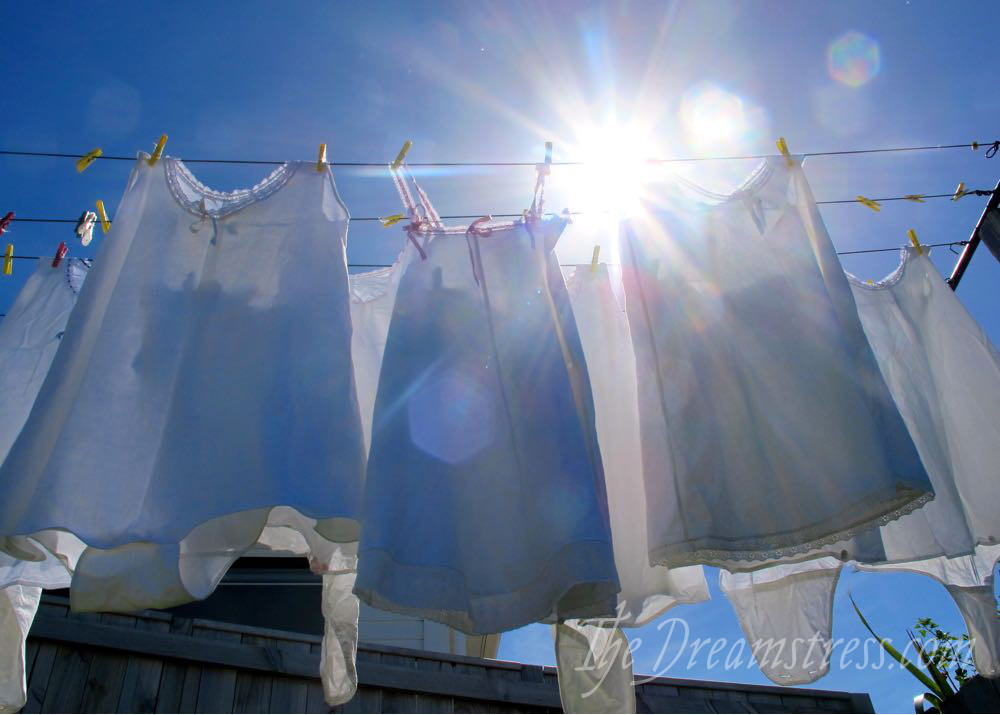
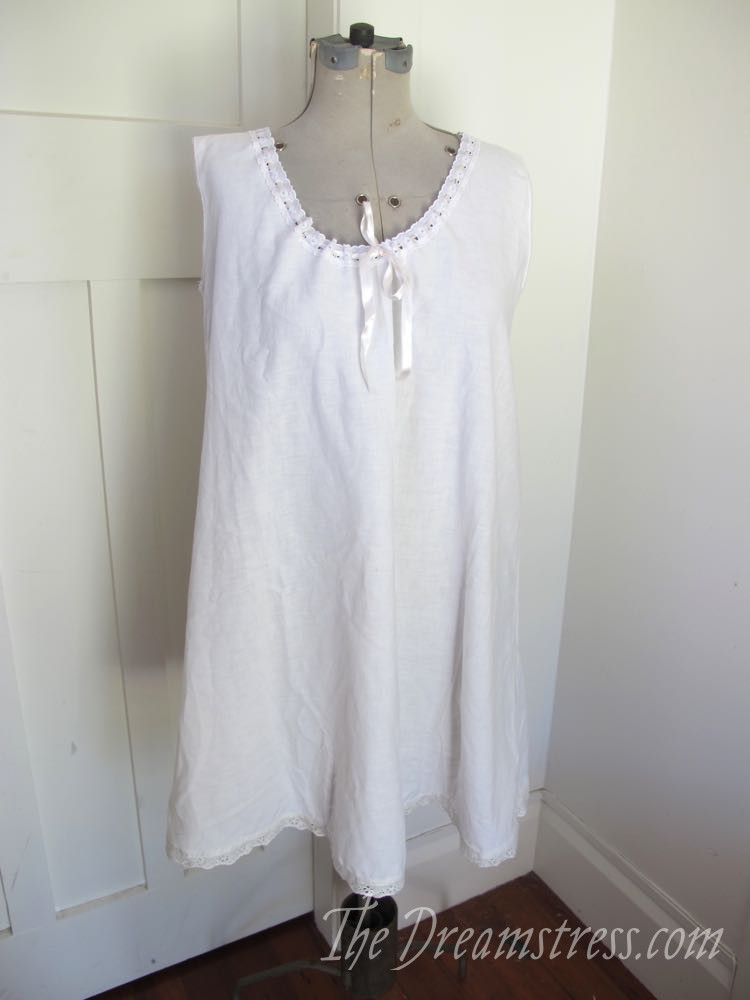
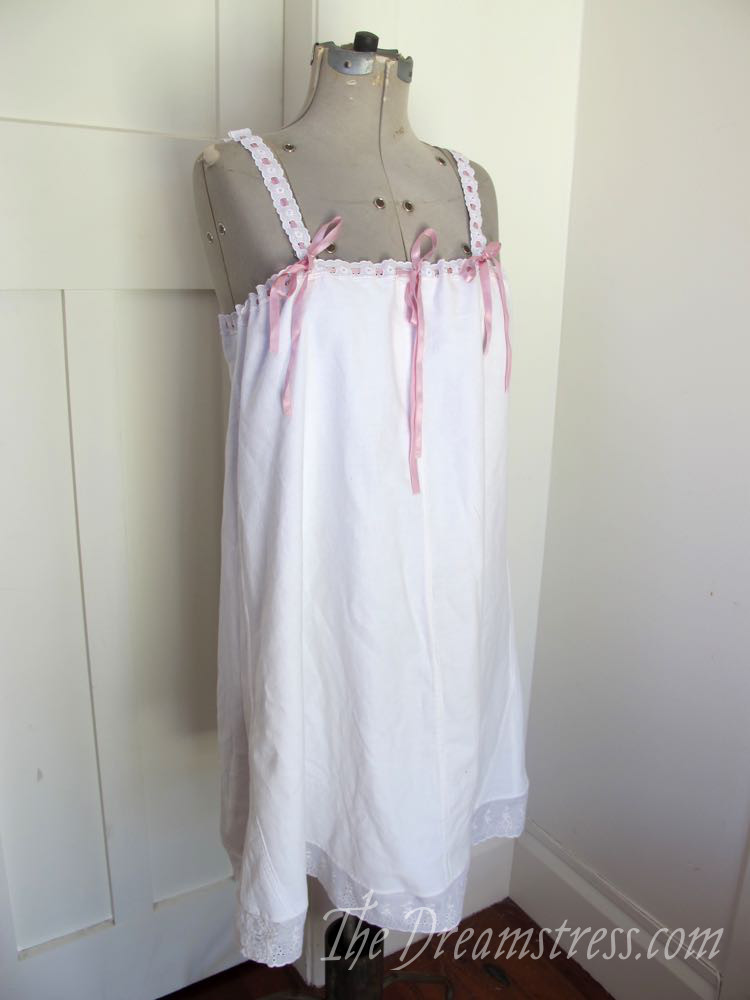
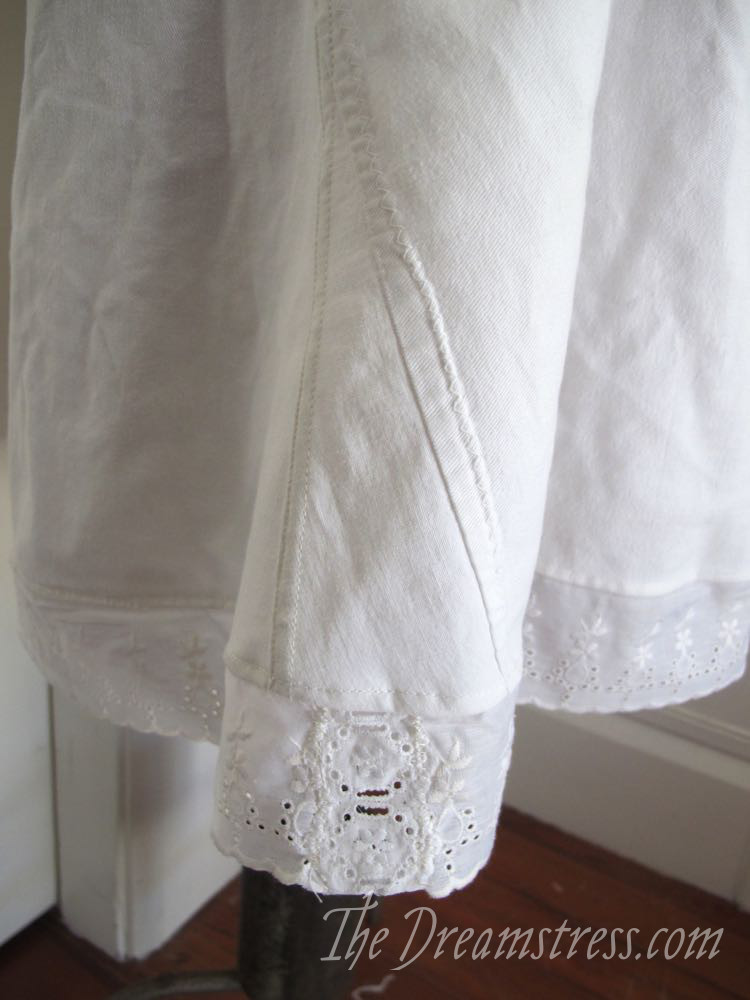
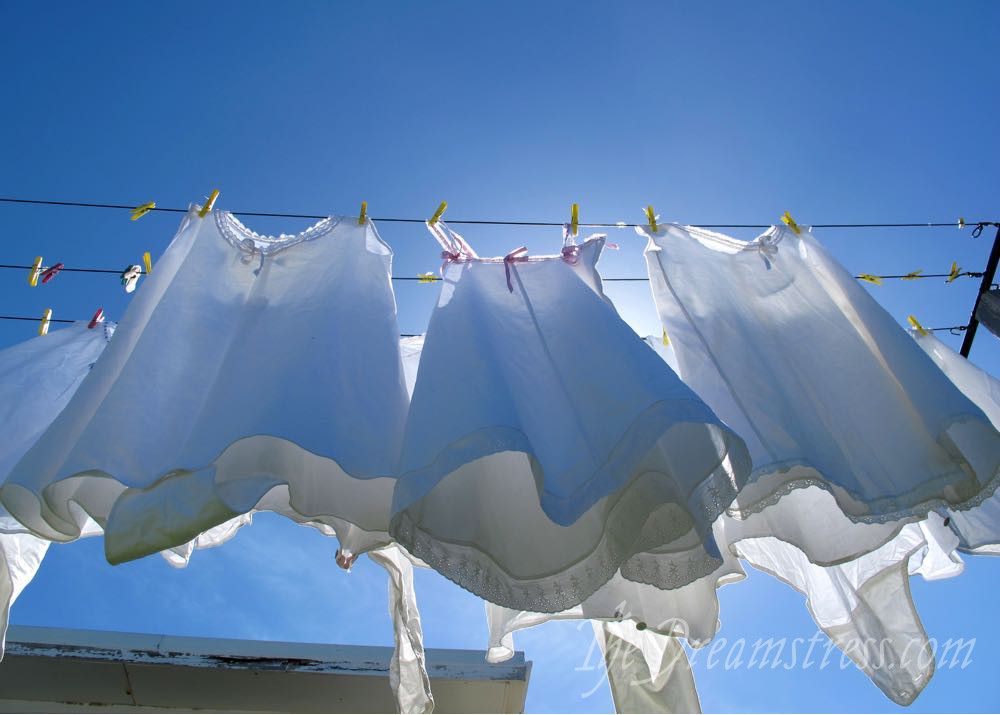
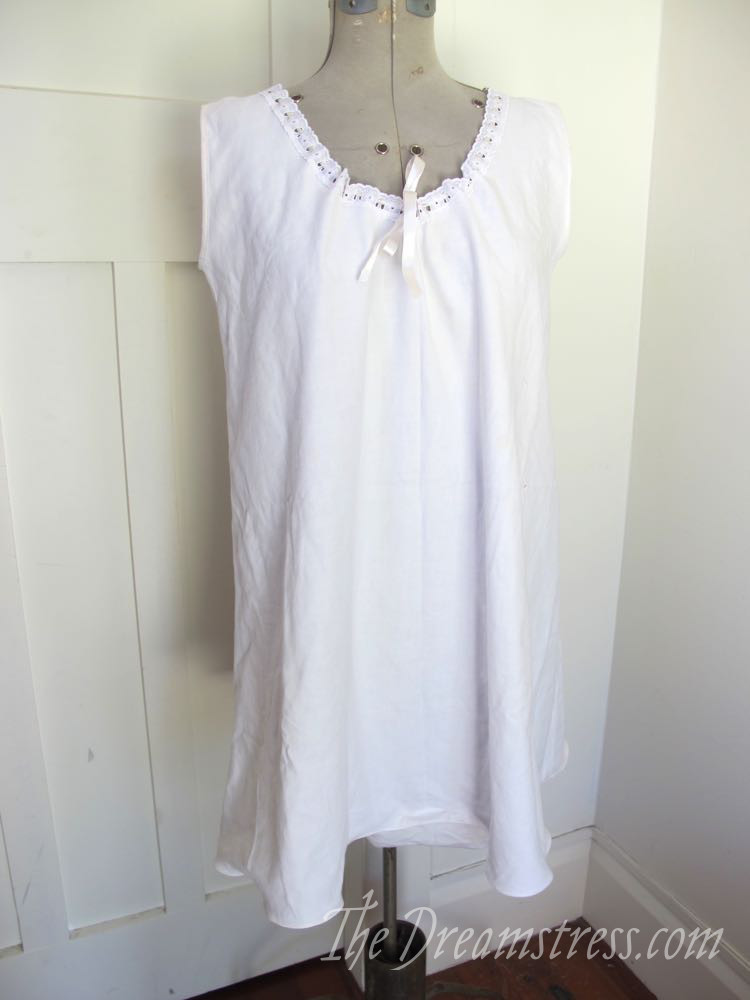
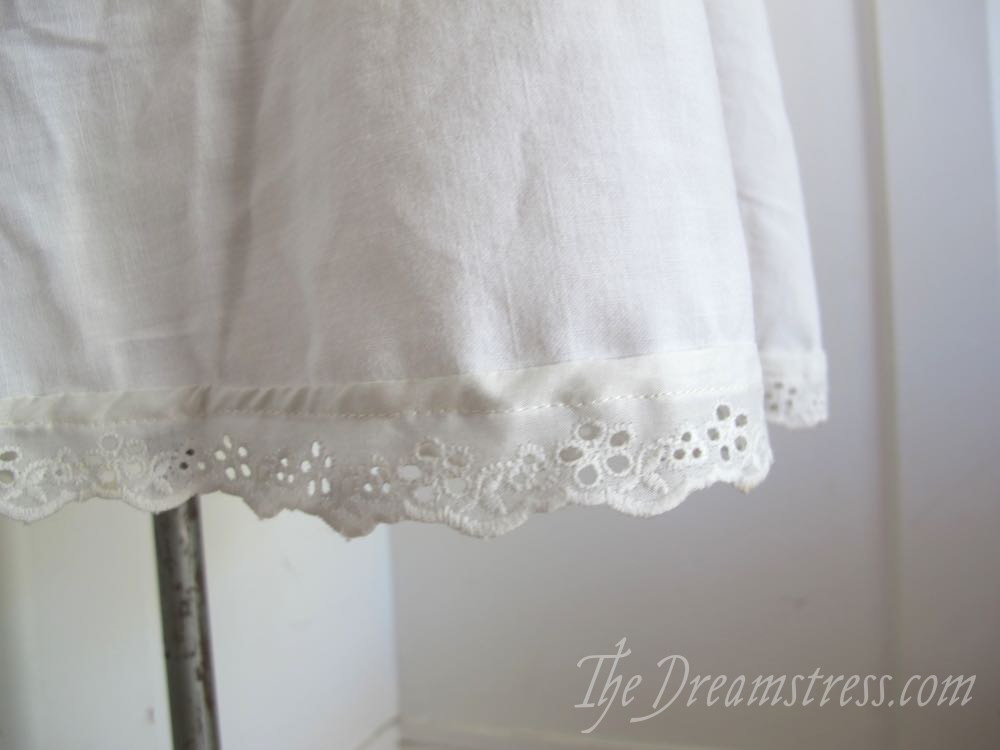
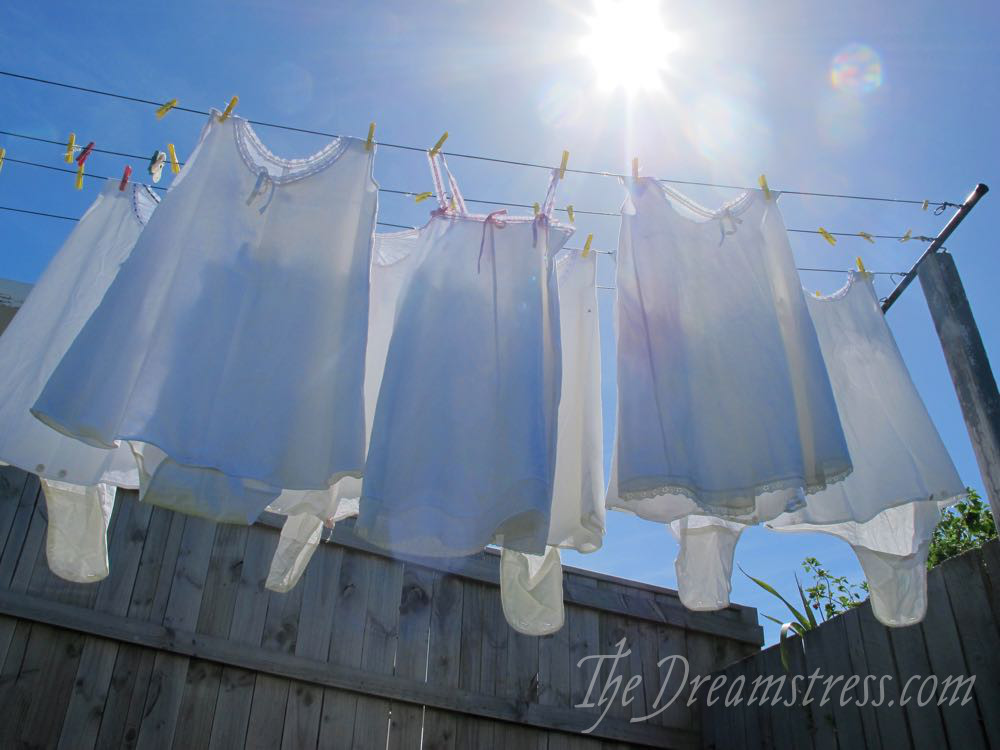
Old sheeting is so soft and cool and comfortable, I can see some of the petti-slips, especially, being worn with other outfits.
Though I do like the idea of a small musical chorus line.
I agree and came to say that–sheets are wonderful!
The chorus line sounds like so much fun! And the animal idea is soooo adorable. Hospital gowns sound good, too.
Funny, because what came to mind was that perhaps sexual assault survivors would benefit from them during the SANE exam (for those outside the US, SANE pelvic exams are performed after an alleged sexual assault in order to gather evidence if the survivor chooses to prosecute) Planned Parenthood is also a place that sees many many MANY sexual assault survivors,.
Since pelvic exams in the states leave you so very exposed, I can see those women really appreciating something that lets them be covered up a little more to be oh-so-helpful and let the survivor have more control.
They’re very pretty. I don’t know what you should do with them but they are way too pretty to use as hospital gowns or for hairless goats!
Some of your combinations might make good hot weather wear under dresses that aren’t terribly fitted; that would be much nicer than using them for hospital gowns, dogs, or amateur theatricals.
Your comment about them becoming the next trend made me think of the calchemise which I first read about in this post by Peter Lappin:
http://malepatternboldness.blogspot.com/2016/04/not-joke-calchemise-yea-or-nay.html?m=1
Old sheets are just the best! The list of things you can do with them is endless, and it doesn’t surprise me that they were sometimes made into undies in the 1910s.
You know, you might be able to wear these as summer tops with a skirt. They’re pretty, and so few people will know they’re Edwardian combinations. Or you could actually turn them into summer tops.
They look simply lovely. I wish I had that many (or at least one pair :D) combinations! I would just wear them under wide skirts like your new Scroop Fantailskirt pattern (so in love with this one, too!). The top would look lovely during summer.
If you own that many, maybe you can get into the Guinnes World Record book some time soon.
I agree with Hvitr’s suggestion of wearing them as summer tops with a skirt. I wouldn’t alter them, though; you might want to do another “2 weeks in the 1910s” research project, and you’d want plenty of period underwear for that.
I would wear them as dresses in their own right, in summer with sandals and in winter with little cardigans, tights and boots. Very “elfin”! If you didn’t want them all in the same colour, you could always dye them in your favourite hues…
On top of all the other suggestions, they might make nice nightwear, depending on your preferences – I’ve used reproduction chemises as regular nightgowns before, in a pinch!
I second the nightgown idea – my Regency chemise makes an excellent summer nightgown. 🙂
Also, if nothing else, on the line like that they would make for a nice photoshoot background for some less fancy clothes!
One benefit to using poly ribbon in period undies is that it makes them easily machine washable without having to remove the ribbon, whereas with silk ribbon I just air things or take out the ribbon before machine washing.
Best,
Quinn